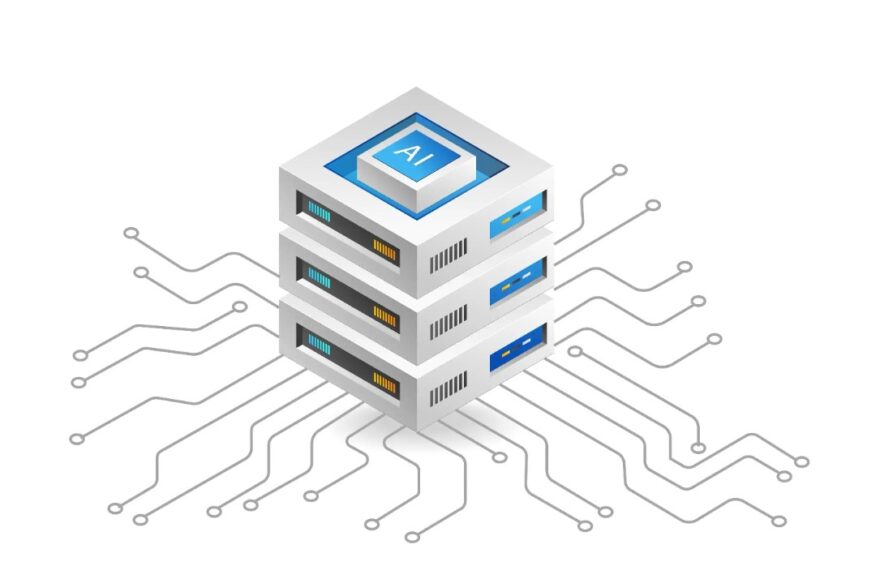Artificial intelligence may seem like a purely algorithmic field, but its success depends as much on how well data moves as on how well models learn. The concrete link is simple: inefficient data transfer limits the amount, quality, and freshness of data available for training and inference, which directly reduces AI accuracy.
Every lag, bandwidth bottleneck, or unoptimized pipeline creates noise and delay that weakens predictive precision. Modern AI accuracy isn’t just a question of better models; it’s a question of how efficiently data flows across networks, storage layers, and devices.
Why Data Transfer Matters More Than Ever
As AI models grow in size, their appetite for data grows even faster. A language model like GPT or a computer vision system in autonomous cars must process terabytes of real-time information from sensors, cloud databases, and edge devices.
When transfer speeds drop or latency increases, AI models can’t synchronize properly with their inputs. This leads to degraded accuracy, especially in tasks requiring live decision-making, such as fraud detection, industrial automation, or autonomous navigation.
The connection between data transfer and AI accuracy can be summarized in three core principles:
|
Principle |
Description |
Example |
| Speed | Faster data transfer enables models to process more samples in less time, improving statistical accuracy. | High-speed pipelines in healthcare imaging improve diagnostic precision. |
| Integrity | Clean, lossless data transfer prevents corruption or truncation of key features. | Financial AI models rely on unaltered market feeds for accurate forecasts. |
| Timeliness | Low latency ensures data reflects the most current reality. | Self-driving cars require millisecond updates from multiple sensors. |
When any of these elements break down, model outcomes deviate from real-world behavior. That deviation is measurable; e, companies have found accuracy drops of 5–15% in models trained on delayed or incomplete data streams compared to optimized, synchronous datasets.
The Hidden Costs of Poor Data Transfer

Inefficient data transfer doesn’t just waste bandwidth; it skews results. Training on partial or outdated datasets causes bias, while network congestion can interrupt real-time inference pipelines. For example, a facial recognition model that loses even 2% of frames during data ingestion may misclassify or fail to detect faces under certain lighting conditions because its input distribution shifts unpredictably.
Beyond model errors, poor transfer efficiency drains computational resources. GPUs and TPUs often idle while waiting for data from slower storage nodes, leading to lower utilization and higher training costs. In edge AI, where models rely on microcontrollers and local devices, limited data throughput can make neural inference practically impossible beyond small-scale operations.
This is why organizations now invest as heavily in data infrastructure as in model architecture. The performance ceiling of most AI systems is no longer defined by model size but by data mobility, how fast, how safely, and how intelligently data travels between sources, storage, and algorithms.
Real-World Example ─ How Data Pipelines Shape Accuracy
Consider an autonomous delivery robot operating in a city. It relies on continuous streams of visual, lidar, and GPS data to detect pedestrians, plan routes, and avoid collisions. If the internal data transfer from sensors to the AI decision engine experiences even a 200-millisecond delay, that robot may misjudge a crossing pedestrian’s position. The model itself could be highly accurate under lab conditions, but poor data flow destroys that accuracy in reality.
A similar principle applies in AI-driven finance, where algorithms trade based on microsecond-level data. A few milliseconds of lag in data transmission can turn a profitable prediction into a loss. In this sense, data transfer efficiency acts as the unseen variable that determines whether AI is accurate, reactive, and trustworthy, or outdated and wrong.
Optimizing Data Transfer to Maximize AI Accuracy

Organizations use multiple strategies to improve the efficiency-accuracy relationship. These include:
- Edge computing integration – Processing data closer to where it’s generated reduces transfer distance and latency. Instead of sending raw data to the cloud, edge devices perform pre-processing or inference locally.
- Compression and encoding optimization – Intelligent compression methods preserve essential information while minimizing payload size, helping models receive more data faster without loss of fidelity.
- Parallel data streaming – Breaking large datasets into concurrent transfer threads increases throughput and reduces training time.
- Adaptive data routing – AI-based traffic management systems dynamically reroute data through less congested paths in distributed networks.
- Data versioning and synchronization – Ensures that all nodes and training environments work with the same dataset version, preventing inconsistencies that can degrade model accuracy.
A 2024 case study by several cloud-infrastructure providers found that improving data transfer efficiency by just 25% increased model inference accuracy by 7–10% across diverse use cases, from logistics forecasting to medical image recognition.
Where AI and Data Transfer Converge
The next evolution of artificial intelligence depends not only on neural networks but also on the invisible layer of AI data transfer, the architecture connecting data sources, storage, and machine learning environments. Systems like AI data transfer platforms are designed to address bottlenecks in data mobility by optimizing how information is structured, transmitted, and validated before it ever reaches the model.
These solutions often combine data compression, smart caching, and metadata-driven orchestration. Instead of brute-forcing larger datasets through limited pipelines, they streamline communication between nodes so models receive consistent, high-quality information in real time. For developers, this means fewer blind spots, faster retraining cycles, and models that truly reflect current conditions rather than outdated inputs.
By aligning data transfer protocols with machine learning objectives, organizations create closed feedback loops where the system continuously learns from fresh, reliable data, improving accuracy without constantly increasing computational load.
Concrete Link ─ Efficiency Equals Accuracy

At the heart of every AI pipeline lies one truth: data transfer efficiency directly predicts output accuracy. No algorithm, however advanced, can outperform the quality of the data it receives or the speed with which it receives it. This connection manifests in every step of the pipeline:
|
Stage |
Efficiency Factor |
Accuracy Impact |
| Data Ingestion | Bandwidth, latency, error rate | Determines sample completeness |
| Data Storage | I/O speed, replication delay | Affects feature retrieval timing |
| Model Training | Parallelization efficiency | Influences convergence and generalization |
| Inference Deployment | Edge transfer, caching | Impacts real-time responsiveness |
Every 1% improvement in pipeline efficiency compounds into measurable accuracy gains when multiplied across billions of training and inference events.
Final Thoughts
The pursuit of AI accuracy has evolved beyond algorithmic refinement. Today, the true differentiator is how intelligently data moves across systems. A model is only as good as the data pipeline feeding it. By improving transfer efficiency, organizations unlock higher precision, faster response times, and lower operational costs, all without rewriting a single line of model code.
Related Posts:
- 15 Best Shoes for Walking on Concrete 2024 - Soft &…
- 20 Best Gaming Headset Under 50$ 2024 - for PC, PS4,…
- Top 10 Best Power Inverter for Car 2024 - Keep Your…
- Top 10 Best Dog Nail Grinder 2024 - Best Care for Your Pet
- 15 Best Dog Food For Allergies 2024 - Adult, Puppy…
- Top 10 Best Outdoor Basketball Shoes 2024 - Durable…







